Skyr Yogurt: A Recipe to Make at Home the Way You Like It
Sneak Preview: This Skyr recipe will show you how to make Icelandic Yogurt at home. I’ll tell you what Skyr is and show you how to make it to suit your tastes and preferences. Detailed pictures and a video are included.
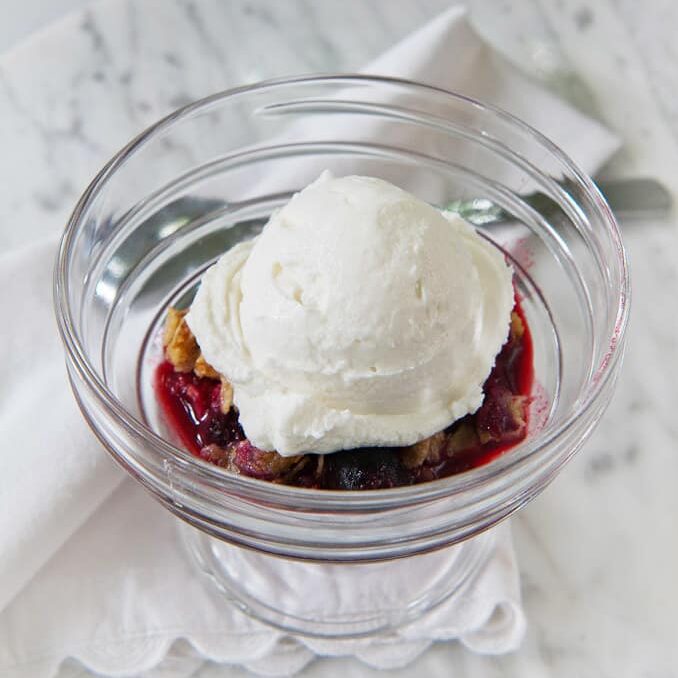
As an Amazon Associate, I earn from qualifying purchases.
Do you like to have something a little sweet to signal the end of your meal? Me, too. If I don’t have a satisfying dessert, I start nibbling on dark chocolate. From there, I spiral down.
We eat skyr for dessert in some form almost every night at our house to help avoid late-night snacks.
This guide to Icelandic yogurt includes instructions for making it yourself at home along with answers to common questions. If you want to know more about this cousin of Greek yogurt, keep reading.
Three Reasons You Will Want To Make Skyr Often
- It’s rich, creamy, high-protein, and so filling.
- Tailor the tanginess and thickness to your personal taste.
- Save money.
Happy Bakers Speak Up
“Thanks for the great recipe!” —PAUL
What is Skyr?
Skyr, also known as Icelandic Yogurt, is a popular style of yogurt originating from Iceland. According to the Icelandic Provisions (a commercial brand available locally) carton, “it has been enjoyed for centuries in Iceland.”
They describe it as “a combination of dairy milk and cultures that is rich and creamy…simplicity on a spoon.”
On a side note, low-fat milk is listed as the first ingredient on the Icelandic Provisions container.
Another popular brand, Siggi’s, lists pasteurized skim milk as the first ingredient.
What About Rennet?
Neither brand lists rennet, a thickener. Although some advocate rennet, I have it on good authority (an email from a company that makes this stuff commercially) that rennet is unnecessary if your live cultures are plentiful and active.
Skyr is thicker than Greek yogurt and contains more protein than other yogurts. This makes sense when it takes 4 cups of milk to make one cup of Skyr.
Traditionally, Greek yogurt requires 2 cups of milk to make one cup of yogurt.
Want to Try Making Skyr Yourself?
Since I love to make yogurt, and I like to save money, I decided to try making skyr at home. (I’ve been making Greek yogurt and answering your questions about making it for over 13 years on this website.)
If you want to try making it yourself, check out my method below. Compare it to others online, and I think you’ll find this method easier and less complicated than most.
Maybe you’re not like me, but I find I won’t do something very often if it’s too involved. Of course, the first few attempts may take longer until you get your system figured out. But in my opinion, it’s so worth it.
Four observations about making Skyr
1. Use skim, low-fat, or whole milk to make Icelandic yogurt.
The fat adds creaminess. So does whipping the final product (optional) and/or adding a bit of heavy cream.

Take it into ice cream-like territory with some sweetness if you want. A few colorful sprinkles might even convert the kids in your life.
2. Use milk with increased solids
Braums (and probably others I’m not aware of) employs a special evaporative technique to increase the solids in their lower-fat milk. This results in milk with higher protein and a better taste right out of the carton.
Consequently, it will be difficult to strain this yogurt to 1/2 of the original volume because of more solids. No worries.
Even if you get it down to 1/3 of the original volume, it will be very thick and totally delicious.
3. Choosing a starter
I purchased Siggi’s plain yogurt as a starter for one batch and Icelandic Provisions Skyr for the other. Both batches turned out similar, with only the slightest difference in tartness. The particular strain of cultures used in each brand is listed on their respective cartons. Interestingly, they are different.
Which starter you use is not as important as how fresh it is. That’s why the best starter is often the fresh yogurt you make yourself. Of course, you won’t have that available in the beginning.
Note: You can use either Greek yogurt or regular yogurt as a starter so long as it is fresh and has no additives.
4. How to tailor the tartness of yogurt to your own liking
Some people consider Skyr or Icelandic yogurt tarter than Greek yogurt. My experience is that it is milder than Greek or regular yogurt. Although many people prefer a sour taste, I like a milder yogurt with less tartness.
The “tartness” of any homemade yogurt can be affected by the length of incubation and the type of milk used.
I go for the shortest incubation period possible that still produces a firm product. Mine usually takes about 4-5 hours to set.
I strain it on my kitchen counter for about 3-5 hours using a Kleynhuis yogurt bag, as seen in the picture below. The yogurt is perfectly safe at room temperature for several hours because of the acid content.
If you don’t want to purchase the yogurt bag, see this post about using coffee filters and a cheap colander. It’s so much better than using a double layer of cheesecloth.
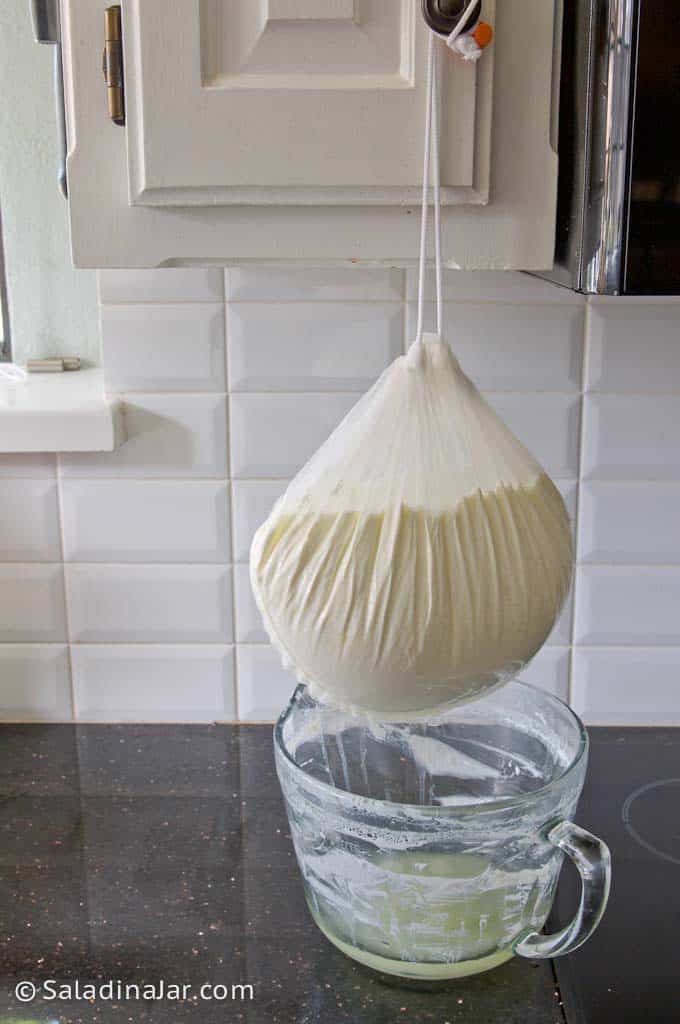
The result?
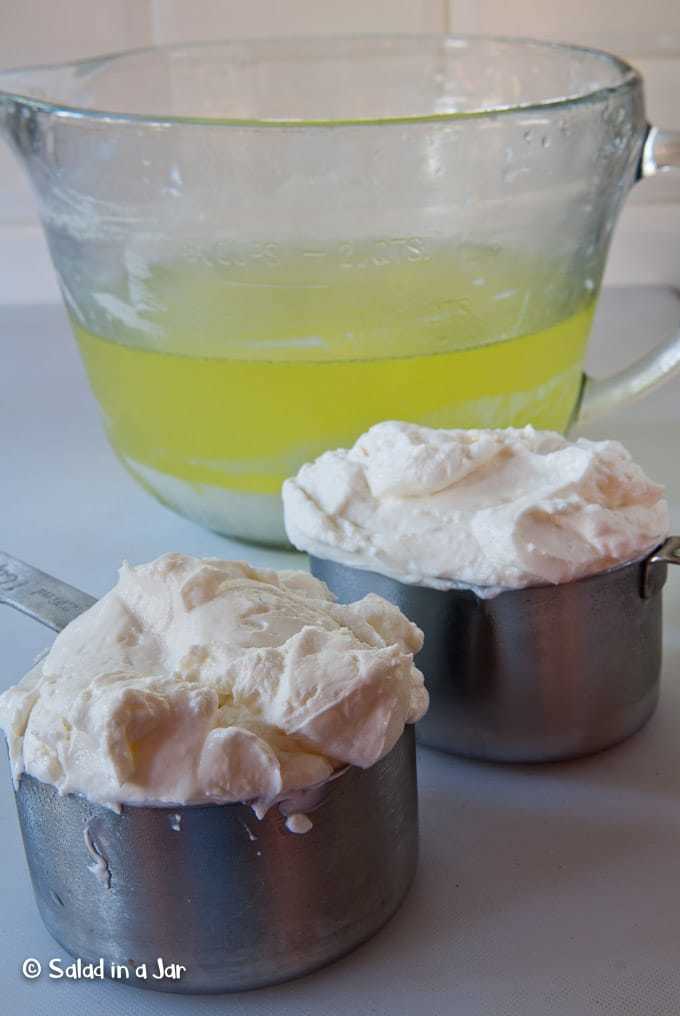
My yogurt turned out similar to what I have always called yogurt cheese. As you can see in the picture above, 2 quarts of milk strained down to a generous 2 cups of yogurt and lots of whey.
If you’re wondering what to do with all that whey, see this post for 18 ways to use yogurt whey.
How To Make Skyr at Home
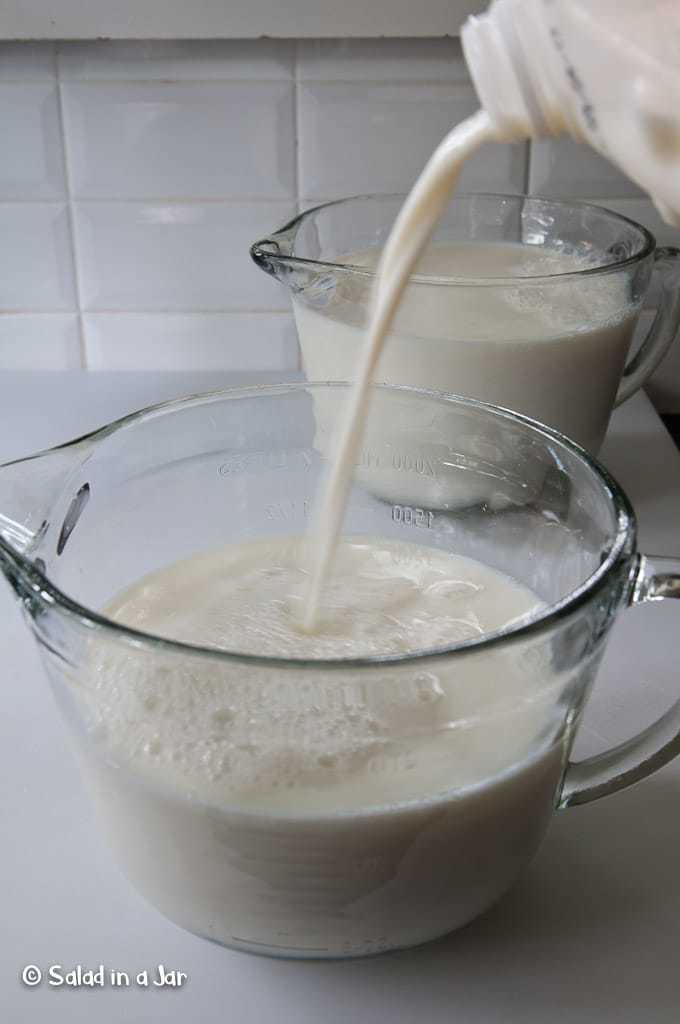
Heat in a microwave until the temperature reaches 180˚ F. For thicker yogurt, even before straining, add 15 minutes in your microwave at 20% power to hold the temperature around 180˚F.
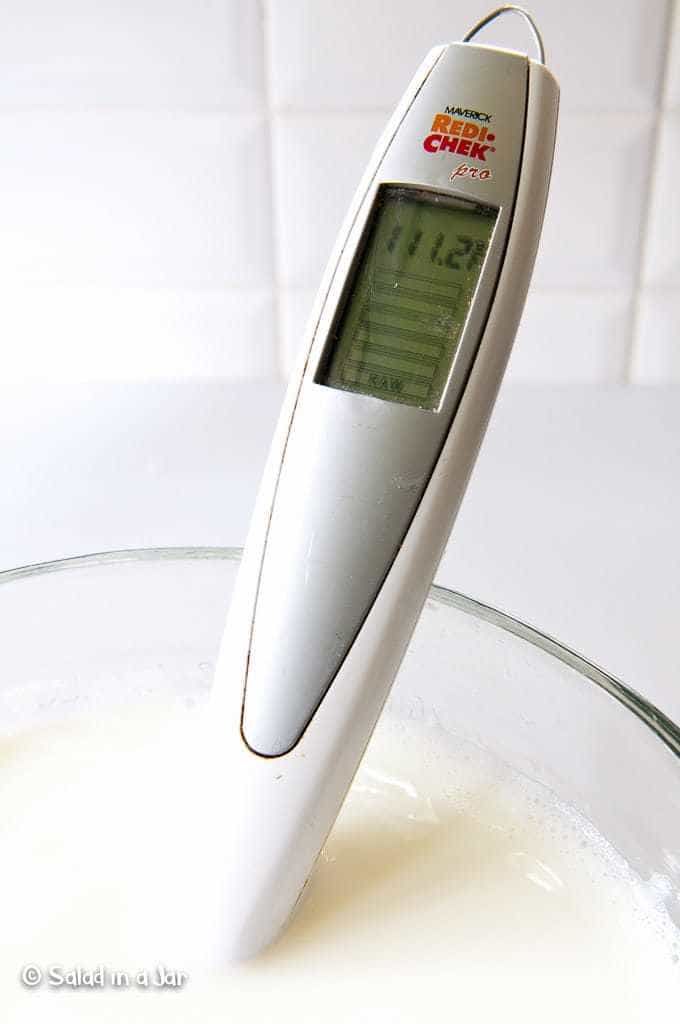
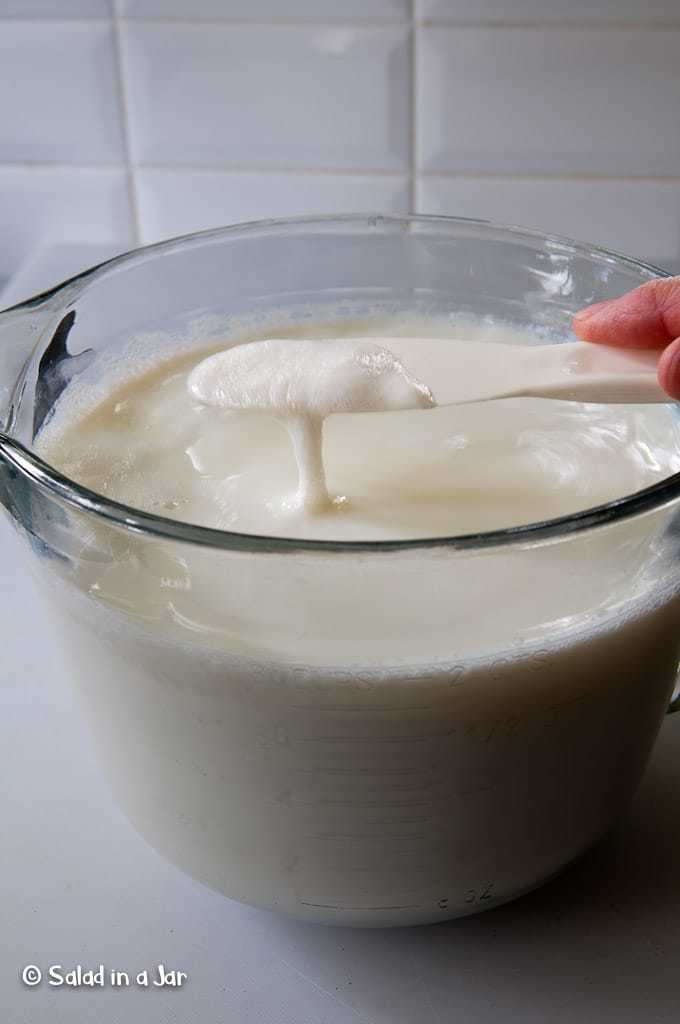
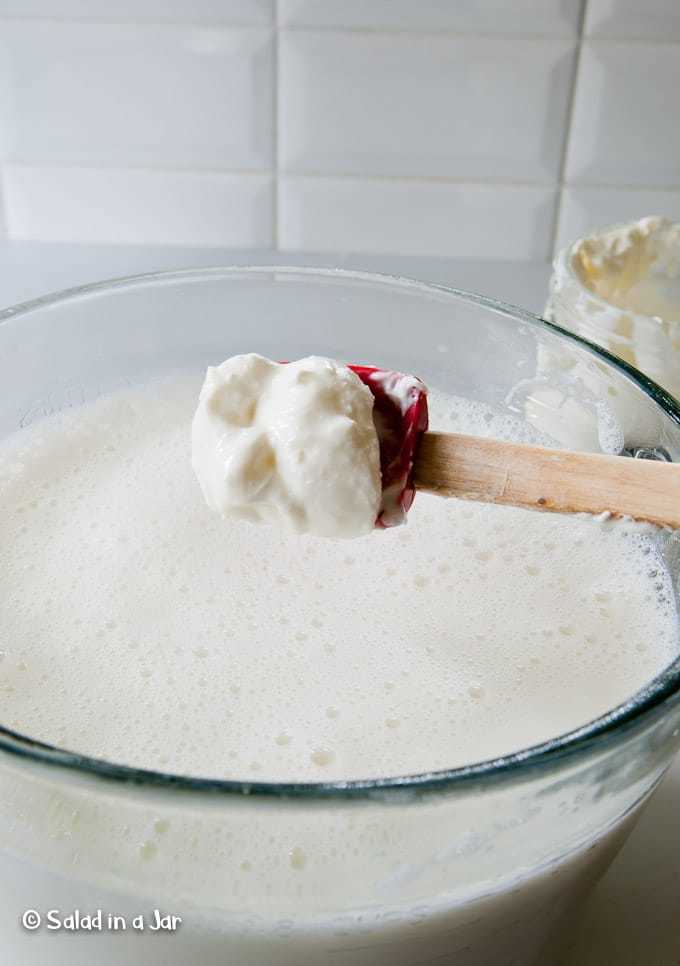
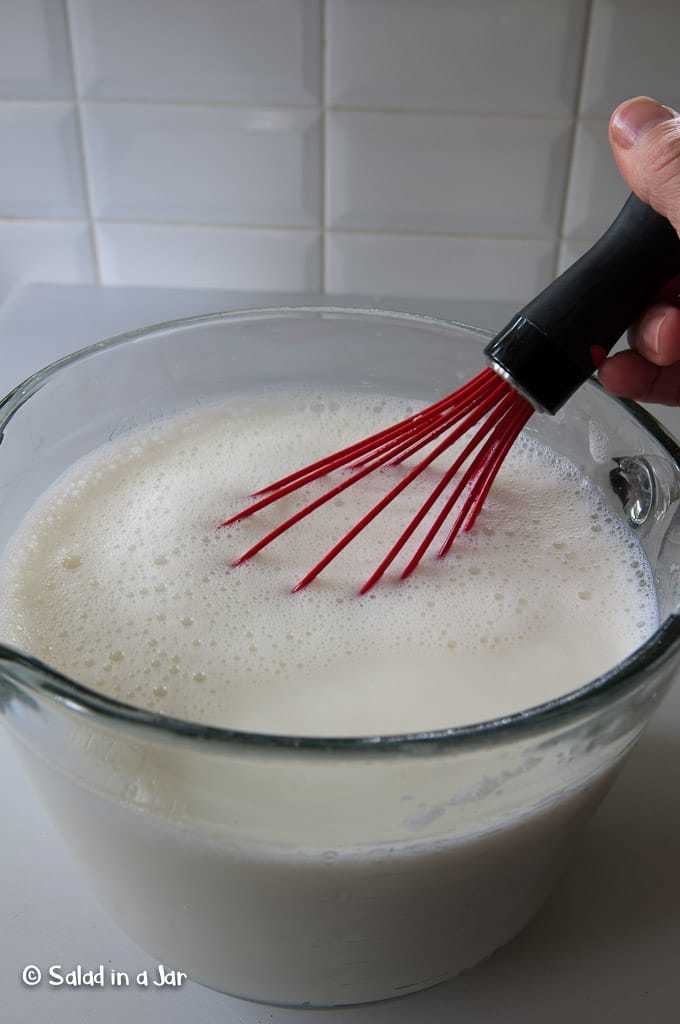
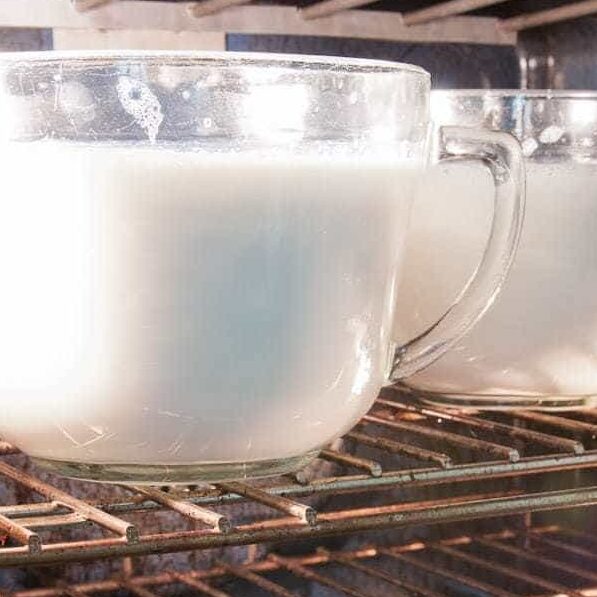
Don’t disturb or move the bowls during this period. Cover the yogurt with a towel, paper plate, or nothing if the bowls are in an enclosed compartment.
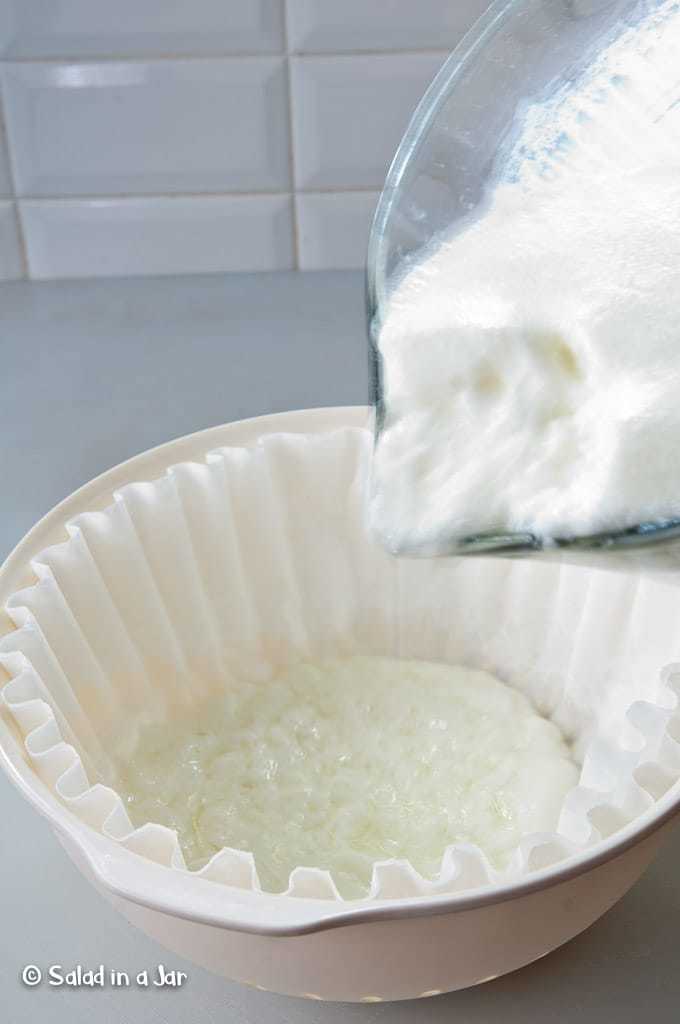
Check out these posts for different methods for making thick yogurt by straining it: A Yogurt Bag as a Cheesecloth Alternative for Making Greek Yogurt, How To Strain Yogurt with Paper Coffee Filters, or An Easy Way To Strain Yogurt Without Cheesecloth.
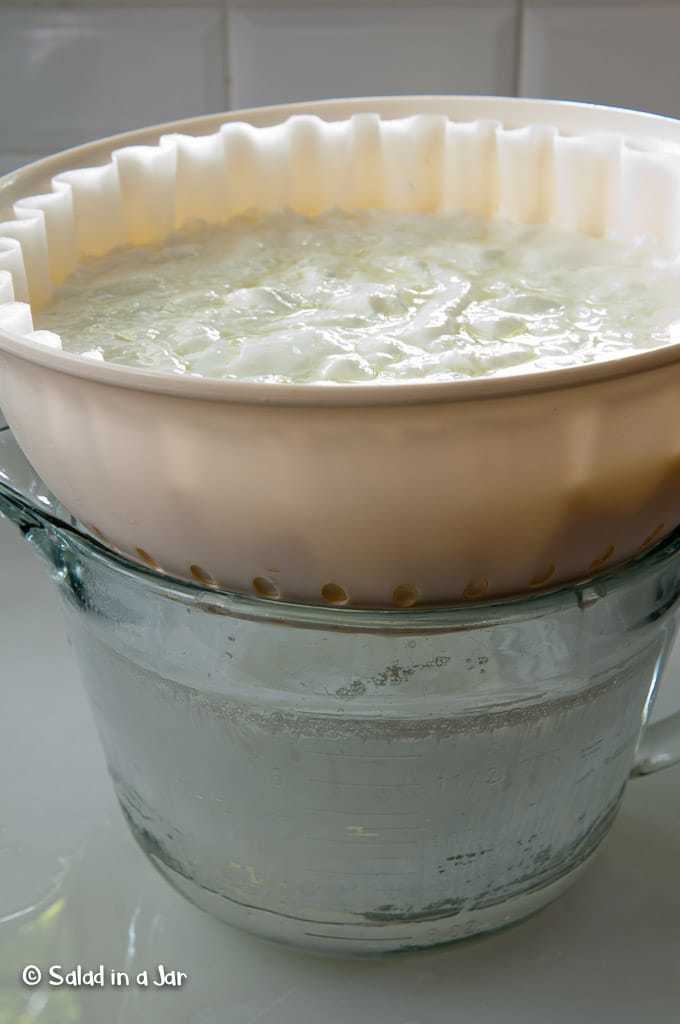
FAQ About Skyr
Because it’s more concentrated, which means more protein. Most people find that protein makes their food more satisfying.
Serve it the same as Greek or regular yogurt. Here’s an idea: Try some Icelandic yogurt mixed with a small serving of Halo ice cream (our new fave) or ice cream. I think it tastes like soft-serve frozen yogurt.
Other serving ideas involve fresh berries, honey, vanilla extract, chia seeds, toasted almonds, pecans, granola, and my personal favorite, cherry jam.
For the record, both brands of commercial yogurt I purchased claim 17 grams of protein, 6 carbs, and approximately 100 calories in a 5.3-ounce serving. I’m assuming the stats on my homemade Icelandic yogurt are similar.
Parting thoughts: Are you new to making yogurt? Start simple with an Instant Pot and the cold start method for making regular yogurt. When you master that, come back and try this Icelandic yogurt.
Help at Your Fingertips: For questions or suggestions, email Paula at saladinajar.com. If you need help, I’m happy to troubleshoot via email (faster than leaving a comment). Attach pictures and as many details as possible for the best advice.
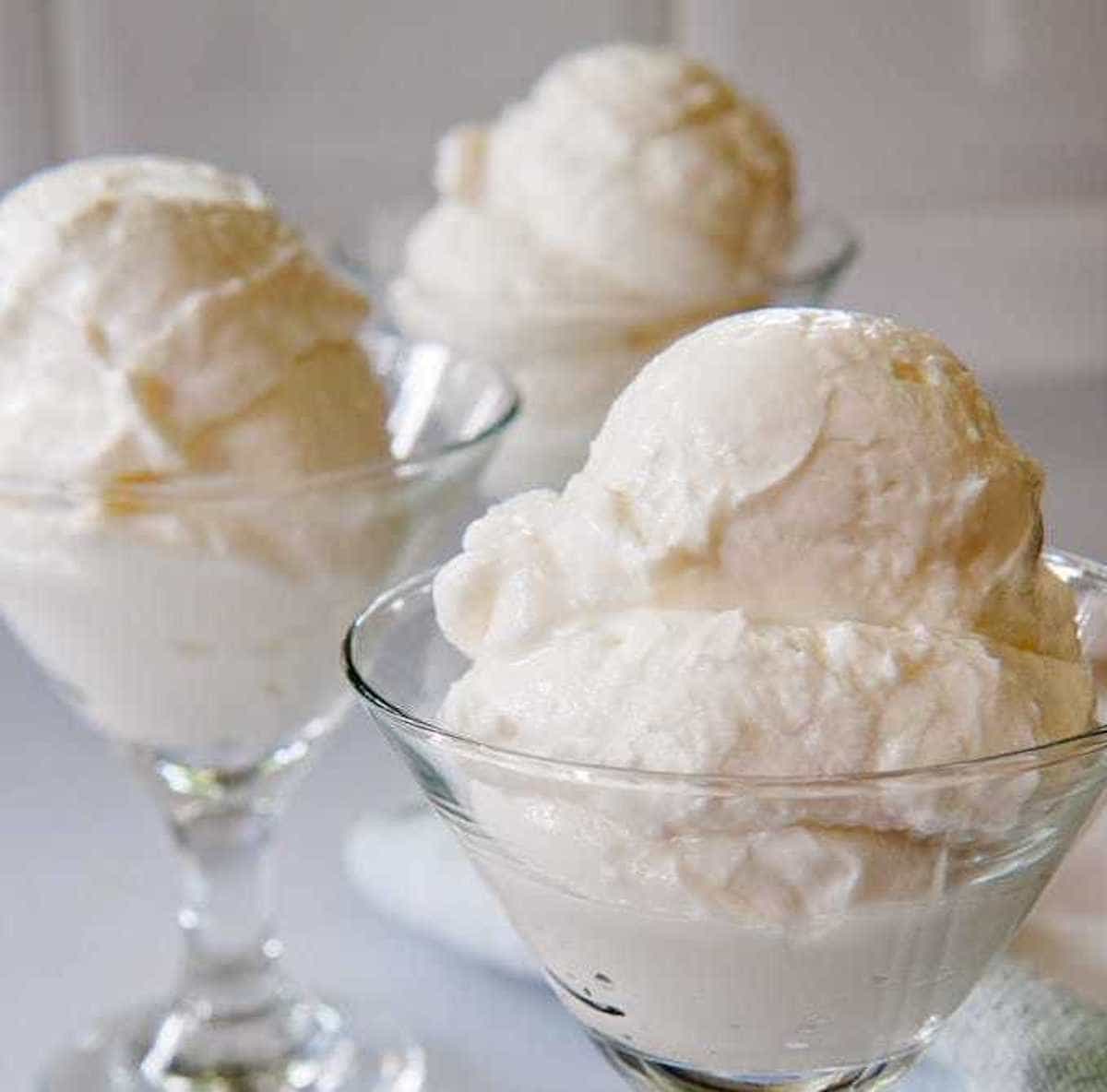
Skyr Recipe
Rate this recipe
(5 stars if you loved it)
Video
Ingredients
- 2 quarts (1892 g) skim or low-fat milk or whatever milk you prefer
- 1-2 tablespoons (15 g) unflavored commercial yogurt (Once you make your own yogurt, you can use it as a starter.)
Instructions
- Fill a Pyrex batter bowl (my preference) or 2-quart microwave-safe glass container with 2 quarts (1892 g) skim or low-fat milk.
- Heat on HIGH in a microwave until bubbles begin to appear around the edge. The temperature should reach 175-180˚F (79-82˚C)( after you stir it. (In my microwave, it takes 16 minutes on HIGH, but yours may take a minute or two more or less). You can also heat milk on the stove if you prefer. It will take a lot longer; be careful not to scorch it.
- Allow the milk to cool until the temperature drops to between 100 and 110˚F (38-43˚C) This is the step (more than any other) where more people ruin their yogurt. At the beginning of your yogurt adventures, get yourself a thermometer and check!! Too hot, and the little yogurt bodies will be murdered!
- If a skin forms, remove it.
- Whisk in 1-2 tablespoons (15 g) unflavored commercial yogurt as a starter or use yogurt from a previous batch of your own homemade yogurt. No need to heat or warm it ahead of time.
- Cover milk and place in a warm environment where the temperature stays around 100-110˚F(38-43˚C)
- Allow the milk to incubate for 5-12 hours. The longer you incubate, the more tart your yogurt will be.
From Regular Yogurt to Skyr
- Strain set yogurt. (If your yogurt has not set properly, it will not readily strain.) I use a cheap colander lined with a commercial paper coffee filter or a nylon bag designed for straining yogurt. No cheesecloth is required.
- Let yogurt sit in the strainer till the yogurt is reduced down to a quarter of the original volume. Time to strain may be as long as 8-10 hours, but this can vary according to the milk you used, the starter, and the temperature of the incubation. Tip the strainer or stir very gently if the whey has pooled on top while straining.
- Empty whey from the batter bowl and pour the yogurt out of the strainer back into the original bowl. Use a good whisk or portable mixer to beat until smooth, or leave it as is. Chill.
- I’m told it will stay fresh for 3 weeks. We eat it too fast to know.
Notes
Equipment
Nutrition
All images and text ©️ Paula Rhodes for Salad in a Jar.com



Paula Rhodes, owner
As a retired home economist, I created Saladinajar.com to share my belief that you don’t have to be a chef to find joy in creating homemade food worth sharing. Bread machines (used in an unconventional way), homemade yogurt, and quick microwave recipes are my specialty.